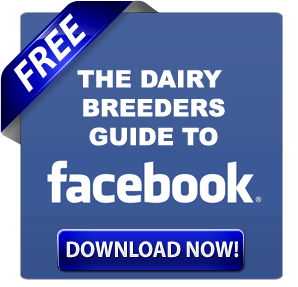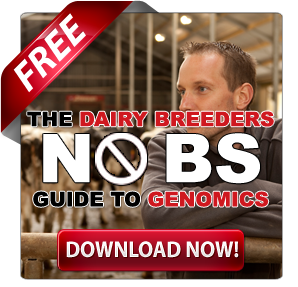In the dairy industry, the transition period from three weeks pre-calving to three weeks post-calving remains a critical challenge for producers. This crucial phase significantly influences a cow’s lactation cycle and overall herd performance. Recent advancements in transition cow management offer opportunities to improve herd health, increase productivity, and enhance farm profitability. This article explores evidence-based strategies and practical approaches leading dairy operations implement to optimize transition cow care.
While challenging, the transition period presents an opportunity for dairy farmers to set the foundation for successful lactation. By focusing on key management areas during this time, producers can potentially mitigate health risks, boost milk production, and improve overall herd longevity. Let’s examine the latest research findings and industry best practices reshaping transition cow management.
The Transition Tightrope: Why It Matters More Than Ever
Imagine your star quarterback is about to step onto the field for the Super Bowl. Now, picture that player facing obstacles just moments before kickoff. That’s essentially what your transition cows experience. Recent studies have shown that 75% of dairy cow diseases occur during the first month after calving. This fact alone, with 75% of dairy cow diseases occurring in the first month after calving, underscores the critical nature of this period.
But here’s the kicker: the impact of a poor transition extends far beyond the fresh pen. Dr. Eduardo Ribeiro from the University of Guelph reports that cows experiencing clinical diseases in the first 21 days post-calving face:
- a 17-29% reduction in pregnancy rates
- up to a 306% increase in culling rates by 305 days in milk
These numbers reflect actual financial losses and animal welfare issues throughout your operation.
“A successful transition period is the foundation for a profitable lactation. It’s not only about guiding cows through calving; it’s about preparing them for long-term success.” – Dr. Eduardo Ribeiro, University of Guelph.
Rethinking the Transition Paradigm
For decades, the dairy industry has focused on managing non-esterified fatty acids (NEFA), ketones, and calcium levels as the primary strategy for transitioning cow health. However, groundbreaking research is challenging this view. A comprehensive review led by Dr. Lance H. Baumgard from Iowa State University suggests that what we’ve long considered problematic may be normal biological processes that healthy cows use to maximize milk production.
This change in perspective raises an important question: Are we inadvertently hindering our cows’ natural adaptations instead of helping them?
The Four Pillars of Successful Transition Management
1. Human Resources: Your Most Underrated Asset
| HR Activity | Description |
|---|---|
| Recruiting and Hiring | Finding and selecting qualified employees |
| Managing Employee Performance | Evaluating and improving worker productivity |
| Training and Development | Enhancing employee skills and knowledge |
| Developing HR Policies | Creating guidelines for workplace conduct and procedures |
| Administering Compensation | Managing pay and benefits programs |
| Maintaining Working Conditions | Ensuring a safe and comfortable work environment |
| Record Keeping | Maintaining employee files and HR documentation |
It’s not just about the cows; the well-being of the people caring for them is equally vital. A study published in the Journal of Dairy Science found that farms with well-trained staff and positive team dynamics had 25% fewer transition cow health issues.
Implement regular team training sessions focusing on cow health to enhance transition cow care. Make these sessions interactive and encourage your staff to share innovative ideas.
2. Cow Health: Prevention is the New Treatment
| Health Disorder | Target Prevalence (%) |
|---|---|
| Clinical Ketosis | <15% |
| Subclinical Ketosis | <30% |
| Milk Fever (Hypocalcemia) | <5% |
| Retained Placenta | <8% |
| Displaced Abomasum | <3% |
Proactively preventing issues is more effective than reacting to them after they arise. Dr. Ribeiro’s research shows that preventing a single clinical disease during transition can increase a cow’s 305-day milk yield by 3.5%.
Action Item: Establish a comprehensive health monitoring system that includes daily temperature checks, rumination monitoring, and regular body condition scoring.
- Daily temperature checks
- Rumination monitoring
- Regular body condition scoring
3. Cow Comfort: The Silent Productivity Booster
| Parameter | Goal |
|---|---|
| Lying Time | 12-14 hours/day |
| Number of Lying Bouts | 8-10 per day |
| Duration of Lying Bouts | 60-80 minutes |
| Cow Comfort Quotient (CCQ) | ≥ 85% |
| Breathing Rate | 10-30 breaths/minute |
| Stall Curb Height | 51 cm (20 in) for post-and-rail restraints |
| Manger Curb Height | 46 cm (18 in) for slant bars or headlocks |
| Feed Table/Trough Width | ~71 cm (28 in) |
Ensuring cow comfort is essential for their well-being and productivity, not just a luxury. A 2024 study from the University of Wisconsin-Madison demonstrated that farms that increased lying time for transition cows by just 1 hour per day saw a 2.5% increase in milk production during the subsequent lactation.
Innovation Spotlight: Explore investing in precision dairy technologies such as wearable sensors that monitor cow behavior and provide early alerts for potential health issues.
4. Nutrition: Feeding for Success
The transition period demands a feeding strategy as complex as the body changes your cows undergo. Recent research from Cornell University has shown that tailoring diets to individual cow needs based on their pre-calving health status can reduce metabolic disorders by up to 30%.
“It’s not just about what you feed, but how you feed it. Ensuring consistent feed delivery and adequate bunk space can be just as important as the ration formulation itself.” – Dr. Tom Overton, Professor of Dairy Management at Cornell University.
| Stage | Target BCS |
|---|---|
| Dry-Off | 3.0-3.5 |
| Calving | 3.0-3.5 |
| 30 Days Post-Calving | 2.5-3.0 |
The Inflammation Revolution: A New Frontier in Transition Cow Health
Next, we will explore something intriguing. The latest research points to inflammation as a key player in the transition of cow health. Dr. Baumgard’s team suggests preventing immune system activation, rather than solely focusing on metabolic factors, could be the key to overcoming persistent transition health challenges.
This new perspective opens up exciting possibilities for management strategies. For instance, a 2024 study published in the Journal of Dairy Science found that cows given specific anti-inflammatory compounds during the transition period had 22% fewer health events and produced 7% more milk in the first 100 days of lactation.
Putting It All Together: Your Action Plan for Transition Success
- Implement a Holistic Monitoring System:
- Integrate traditional health checks with advanced technologies for monitoring.
- Incorporate rumination collars and automated body condition scoring systems to track cow health.
- Optimize Your Transition Cow Environment:
- Ensure sufficient space for cows to lie comfortably, promoting their well-being and productivity.
- Install non-slip flooring
- Provide proper ventilation
- Tailor Nutrition to Individual Needs:
- Work with a nutritionist to develop phase-feeding strategies
- Adapt to your cows’ changing needs throughout the transition period
- Train Your Team:
- Allocate resources to regular staff training sessions concentrating on effective transition cow management practices.
- Make it a priority from the top down
- Consider Anti-Inflammatory Strategies:
- Consult your veterinarian for personalized advice on implementing specific anti-inflammatory methods for your cows.
Sponsored by:

Quick Facts
- 75% of dairy cow diseases occur in the first month after calving
- Cows experiencing clinical diseases in the first 21 days post-calving face a 17-29% reduction in pregnancy rates
- Clinical diseases in the first 21 days post-calving can lead to up to a 306% increase in culling rates by 305 days in milk
- Farms with well-trained staff and positive team dynamics had 25% fewer transition cow health issues
- Preventing a single case of clinical disease during transition can increase a cow’s 305-day milk yield by 3.5%
- Increasing lying time for transition cows by 1 hour per day can lead to a 2.5% increase in subsequent lactation milk production
The Bottom Line
Mastering transition cow management is not just about getting cows through calving; it’s about setting the stage for successful lactation, improved longevity, and enhanced farm profitability. By embracing a holistic approach that combines cutting-edge research with practical, on-farm strategies, you can transform this challenging period into a launchpad for herd success.
As we’ve explored the critical importance of transition cow management, it’s clear that mastering this phase can revolutionize your herd’s health, productivity, and your farm’s bottom line. Now is the time to take action. Start by implementing one of the strategies we’ve discussed: optimizing your transition cow environment, tailoring nutrition to individual needs, or training your team on the latest transition management techniques.
Every slight improvement in transition cow care is a significant stride toward securing your dairy’s future success. Are you ready to elevate your farm to the top tier of dairy operations? The transition to excellence starts today—your cows and bottom line will thank you.
Food for Thought
- How does your current transition cow management strategy measure up to the latest research findings?
- Which four pillars of successful transition management do you think your farm could improve on the most?
- Have you considered the role of inflammation in your transition cow health protocols?
- What small change could you implement today to improve your transition cow outcomes?
By continually asking these questions and staying current with the latest research, you’ll be well on your way to mastering the transition period and unlocking your herd’s full potential. After all, in dairy farming, a smooth transition isn’t just a goal—it’s the foundation of your farm’s success.
Key Takeaways:
- 75% of dairy cow diseases occur in the first month after calving, emphasizing the critical importance of the transition period.
- Preventing a single case of disease during transition can increase 305-day milk yield by 3.5% and reduce culling risks.
- Cow comfort is essential: Increasing lying time by 1 hour/day can boost milk production by 2.5% in the next lactation.
- Tailored nutrition strategies can reduce metabolic disorders by up to 30% and improve overall cow health.
- Training farm staff improves team dynamics and reduces transition cow health issues by 25%.
- Inflammation management is a new frontier: Anti-inflammatory strategies can lead to 22% fewer health events and 7% more milk production in early lactation.
- Implementing holistic monitoring systems, like rumination collars and body condition scoring, ensures early detection of health issues.
- A successful transition program combines cow comfort, proactive health monitoring, tailored nutrition, and well-trained staff for optimal herd performance.
Summary:
This comprehensive guide explores the critical importance of transition cow management in dairy farming. It delves into the latest research and expert insights that are reshaping our understanding of this crucial period, spanning from three weeks before to three weeks after calving. The article outlines four key pillars of successful transition management: human resources, cow health, cow comfort, and nutrition. It also introduces groundbreaking perspectives on inflammation and its role in transition cow health. Practical strategies, backed by recent studies, are provided to help dairy farmers optimize their transition cow programs. From implementing holistic monitoring systems to tailoring nutrition for individual cows, the guide offers actionable advice to boost herd health, increase productivity, and enhance farm profitability. By embracing these innovative approaches, dairy farmers can transform the challenging transition period into a launchpad for herd success and long-term farm sustainability.
 Download our Dairy Farmers Guide to Stress-Free Calvings
Download our Dairy Farmers Guide to Stress-Free Calvings
The Dairy Farmer’s Guide to Stress-Free Calvings is a valuable resource for dairy farmers seeking to simplify the calving process and reduce stress. It also offers practical tips for both new and experienced farmers and insights into improving productivity and longevity. It provides practical strategies for stress-free calvings, identifies and addresses common issues, and provides the latest practices in herd management and welfare. This guide will help reduce stillbirths, increase easy calvings, and minimize early exits. Don’t wait. Download this invaluable guide today!
Learn more:
- Transition Cow Facilities: The Golden Investment for Dairy Farm Profitability
- Transforming Young Heifers to Mature Cows: Boosting Dairy Herd Longevity
- From Dry-Off to Peak Lactation: Navigate the Vital 100 Days Around Calving
 Join the Revolution!
Join the Revolution!
Bullvine Daily is your essential e-zine for staying ahead in the dairy industry. With over 30,000 subscribers, we bring you the week’s top news, helping you manage tasks efficiently. Stay informed about milk production, tech adoption, and more, so you can concentrate on your dairy operations.








 Download our Dairy Farmers Guide to Stress-Free Calvings
Download our Dairy Farmers Guide to Stress-Free Calvings Join the Revolution!
Join the Revolution!








